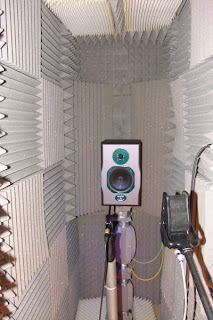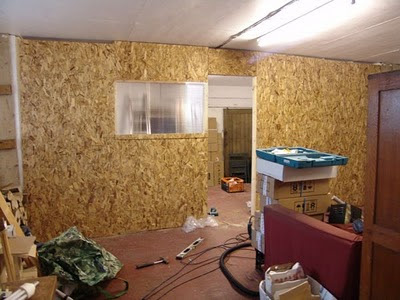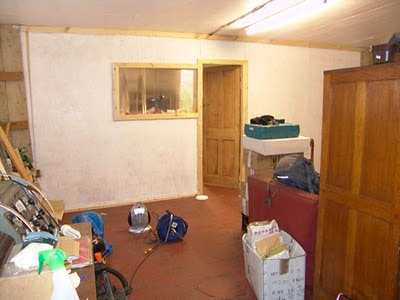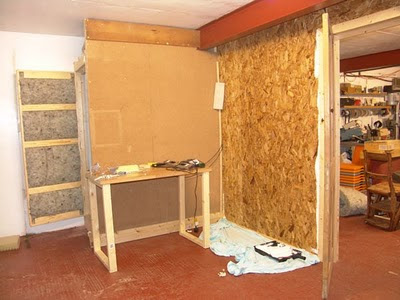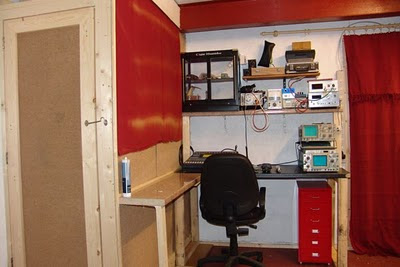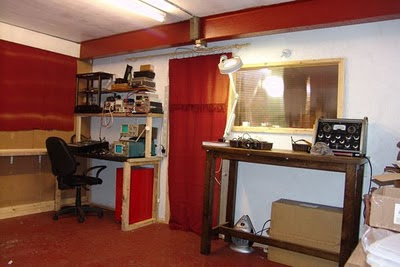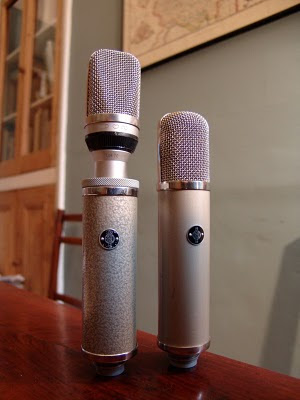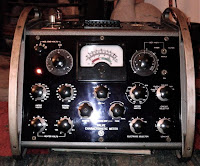Tag: Test equipment
New workshop part 2: Construction Time Again
After a morning with glue and a staple gun, sticking acoustic foam to the soft walls, our new microphone testing chamber is up and running. Here are a couple of photos….
The chamber is hooked up to pink noise and swept-sine equipment, and can collect a frequency plot in a matter of seconds. I’m still working on validation, testing different speakers and mics for best performance, but the facility is already proving its worth.
New workshop! (part 1)
It’s been a quiet month so far for blogging, but a busy one at Xaudia.
We’ve spend the last week building a new microphone workshop in the basement below the studio, including an ‘anechoic’ isolation booth for mic testing. Ralph & Jane have been helping out with building and painting.
Here’s the empty room, waiting to realise its potential:
Wall going up…
A door, window and a slap of paint
Isolation booth and test and measurement area…
And with the test gear going in:
The door on the left is an isolation / semi-anechoic box for testing mics or punishing drummers. The sound treatment is on order.
Anyway, loads left to do….
Neumann Gefell UM57 experiments
So what is the effect of ageing of this capacitor? As the electrolyte dries out, the absolute value of the capacitance drops, which will affect the frequency response of the valve amplifier inside the microphone. To simulate this, a capacitance decade box was wired in place of the output capacitor (C3), and the chart below shows how the frequency response changes as the capacitance decreases in 0.2 uF steps.*
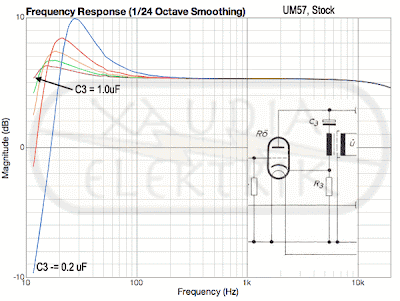
So, having a good quality capacitor here is vital, and the value of this can be used to tweak the bass response if desired. Of course this analysis is just for the tube circuit inside the mic and does not consider the effects of ageing on the capsule itself – that’s a story for another day.
SJT Feb 2010
* Measured using a swept-sine wave from 1Hz to 48KHz.

